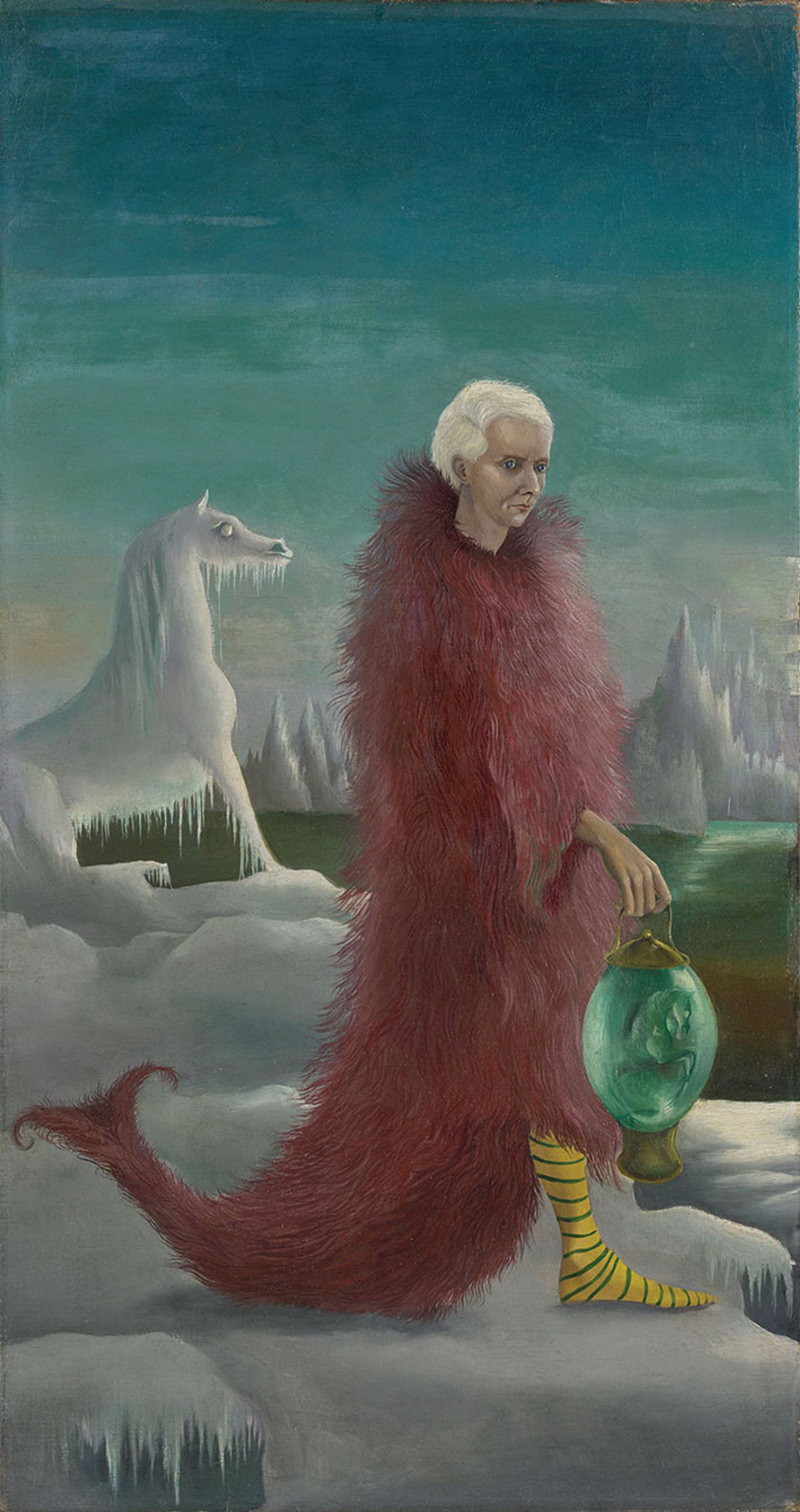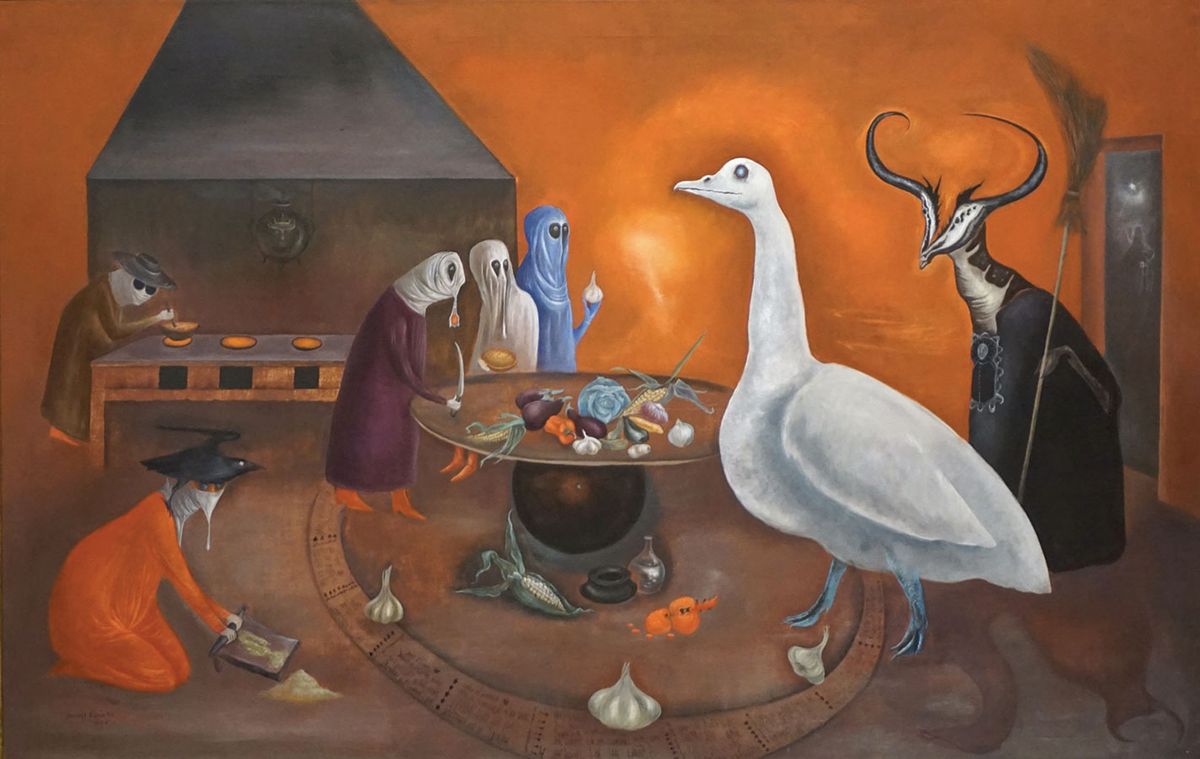Waiting for their visas to escape war-torn Europe, a group of Surrealists gathered in a château near Marseilles during the winter of 1940-41. The movement’s founder, André Breton, and artists including Max Ernst and Victor Brauner turned to games and shared projects to pass the time, collaborating on the creation of a new deck of tarot cards bearing their own favoured symbols. The King, Queen and Jack became the Magus, Siren and Genius, and cards were dedicated to figures such as Sigmund Freud, the clairvoyant Hélène Smith and the alchemist Paracelsus.
Four of the original designs for this deck appear in the first room of Surrealism and Magic: Enchanted Modernity, a major exhibition at the Peggy Guggenheim Collection in Venice that examines the Surrealists’ deep, yet relatively overlooked, interest in magic and the occult. The show is co-organised with the Museum Barberini in Potsdam, Germany, where it will travel in an expanded form in October.
Long associated with dreams and the unconscious mind, many Surrealists also embraced magic—including concepts and images relating to alchemy, occultism and witchcraft—as a “site of revolution and resistance”, says the show’s co-curator in Venice, Gražina Subelytė. “What they wanted to do in very simple terms is to transform the world at a time when it was desperately needed.”
Most of the 54 works in the show notably date from the Second World War and later—years in which many European Surrealists went into exile in the US (where they were championed by Peggy Guggenheim) and Mexico. First to arrive in New York was the Swiss-born Kurt Seligmann, an obscure figure today, but a prominent member of the émigré group in the 1940s and a scholar of magic. One room of the show is dedicated to his paintings.
The “proto-feminist” role of magic
Magic permeated Surrealist exhibitions and publications at the time, offering “a force of emancipation in an oppressed context”, Subelytė says. It played a similarly empowering “proto-feminist” role in the work of women artists affiliated with the group, including Leonora Carrington, Remedios Varo, Leonor Fini and Dorothea Tanning, who are heavily represented in the exhibition. Their paintings are populated with fantastical creatures and other-wordly female characters: sphinxes, goddesses, witches.

Carrington’s Portrait of Max Ernst (around 1939), depicting her lover as a shaman © Estate of Leonora Carrington/ARS, NY and DACS, London 2018
The Surrealists also mythologised themselves as modern magicians and
seers. A “once-in-a-lifetime” pairing in the exhibition, Subelytė says, is Carrington’s Portrait of Max Ernst (around 1939), depicting her lover as a shaman reminiscent of the soul-searching Hermit figure of the tarot, and Ernst’s companion piece Attirement of the Bride (1940), which is part of the Peggy Guggenheim Collection. The nude figure at the centre of the composition has been interpreted as a representation of Carrington, whom Ernst called his “bride of the wind”.
Amid a resurgence of interest in the women of Surrealism, Carrington is a key influence on the 2022 Venice Biennale, which borrows the title of her children’s book The Milk of Dreams. The artistic director Cecilia Alemani has described it as “a magical world where life is constantly re-envisioned through the prism of the imagination, and where everyone can change, be transformed, become something and someone else”. Works by Carrington, Varo and Tanning will feature in one of several “time capsule” displays at the Biennale, placing art history in dialogue with the contemporary.
The double dose of Surrealism in Venice underscores the movement’s enduring relevance today, Subelytė says. Confronted by the senseless reality of two world wars, these artists “turned inwards, seeking alternative ways of understanding the universe”—a revolution of the mind. Decades later, there are parallels to be found with our era of pandemic angst, climate catastrophe and the Russian invasion of Ukraine, Subelytė suggests. “Surrealism is not dead,” she says. “It’s continuing forward.”
• Surrealism and Magic: Enchanted Modernity, Peggy Guggenheim Collection, Palazzo Venier dei Leoni, 9 April-26 September; Museum Barberini, Potsdam, 22 October-29 January 2023


